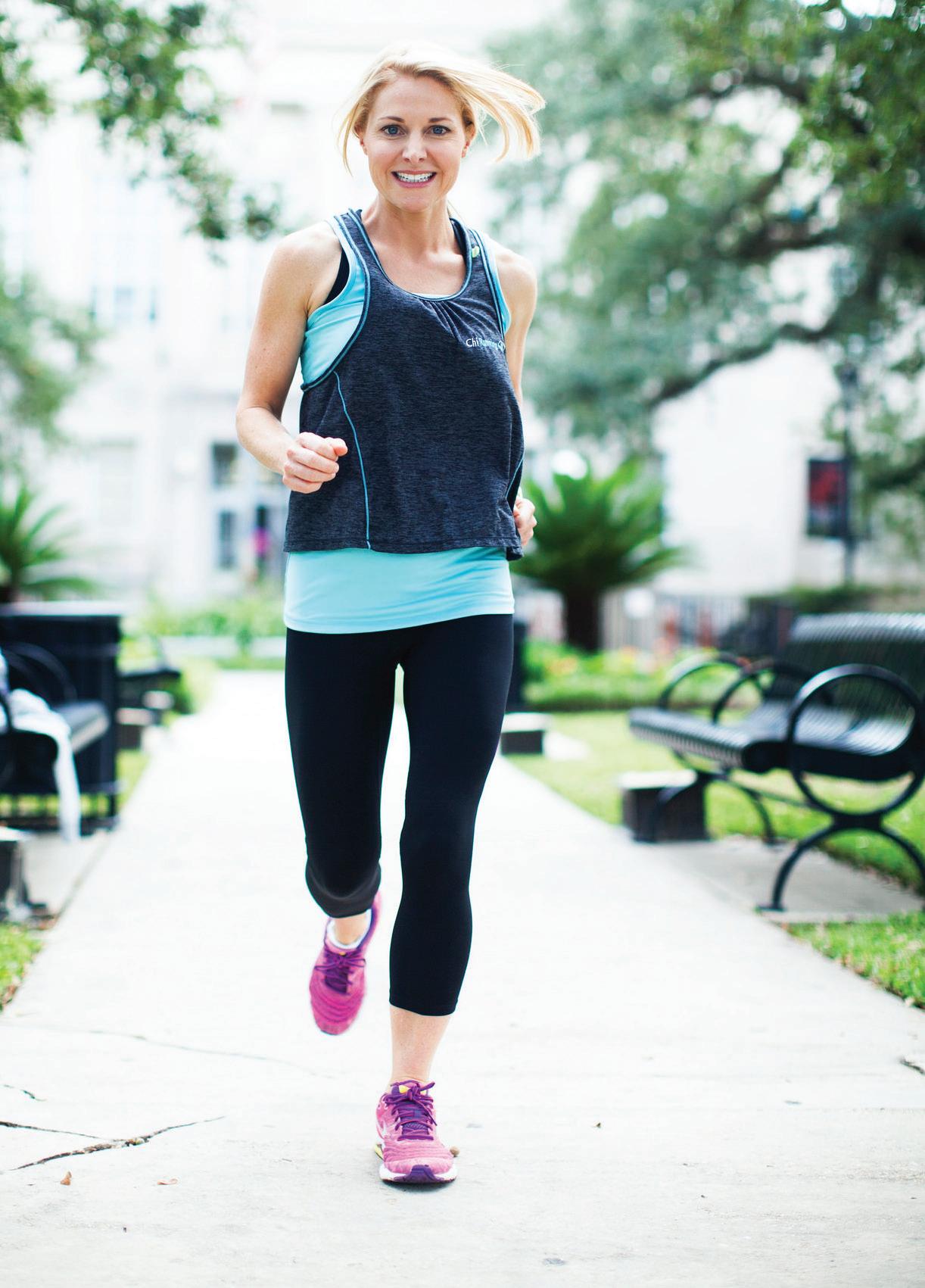
2 minute read
EXERCISE


Advertisement
ENJOY RUNNING AND WALKING FOR LIFE WITHChi By Tami Charbonnet


ChiRunning and ChiWalking combine modern scientific research with ancient Eastern philosophies of T'ai Chi. According to researchers of exercise science at Duke University, ChiRunning and ChiWalking are quickly becoming a popular exercise choice for runners and walkers alike.
Injury is always an issue among both running and walking enthusiasts.
From a young age, we are taught specific running or walking form and posture by our coaches, friends and physical education teachers.
Do you remember being coached to run by striking from heel to toe with high posture and light hands?
Growing up, running 101 was ingrained into our heads to become faster, achieve fitness or athletic goals and prevent injury. Unfortunately, as adults, past ailments and injuries on the track, trail or road haunt us and eventually resurface. Could there be a way to heal or even prevent injury while we continue to enjoy the physical and emotional health benefits of running and walking? ChiRunning and ChiWalking may hold an ancient key to unlocking the answers to our athletic ailments. Yoga, Pilates and T'ai Chi are the base techniques behind ChiRunning.
ChiRunning focuses on core strength, mind-body connection and improving long-term performance and well-being. Certified ChiRunning coach, Julie
Morvant, emphasizes that ChiRunning will indeed improve long-term running performance while keeping both the mind and the body strong and healthy. Human resources at Duke
University say, “Additional benefits of ChiRunning include helping reduce or eliminate: shin splints, IT band syndrome, hamstring injury, plantar fasciitis, hip problems, knee injury.”
Researchers say, “The technique and theory behind ChiWalking is very similar to that of ChiRunning, but with a few differences.
ChiWalking encourages participants to use good posture, loose joints, engaging one's core muscles and relaxing the peripheral muscles of the arms and legs.” As a fitness professional, life-long runner, trainer, yoga teacher and Les Mills group fitness instructor, I have past injuries from “over-training.” I can’t wait to use the techniques of ChiRunning for my next training adventure.
CHIWALKING ALSO INCLUDES A 'MENU' OF WALKS TAILORED TO DIFFERENT NEEDS: 1. Cardio walk 2. Aerobic walk 3. Flexibility walk 4. Loosening walk 5. Focusing walk 6. Energizing walk 7. Walking meditation
These are just seven of the 12 different styles of walks available in the program. For more information, visit www. chirunning.com or www. chiwalking.com.
STEP-BY-STEP CHIWALKING:
• With one hand under your collar bone and the other on the lower belly, lengthen your spine and neck. • Contract the lower abs keeping your feet a fist’s width apart. • Tilt the upper body enough to keep shoulders over hips. • Arms should bend at a 90-degree angle before you swing them back and forth along your body. • Legs should extend in the back instead of reaching farther in front. Keep upper body forward. • Relax abs on the inhale. Engage abs on the exhale.













